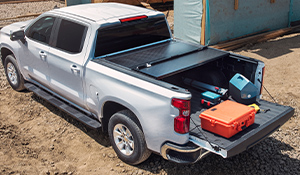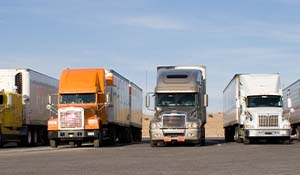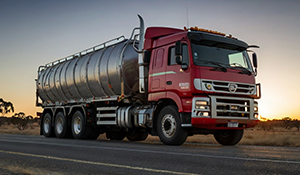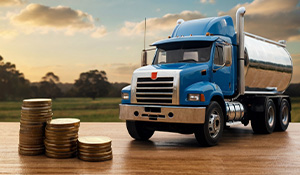2011 Hino Hybrid 300 Series
Hybrid Model range
Standard Cab
616 Short Hybrid IFS AMT
616 Medium Hybrid IFS AMT
Wide cab
616 Medium Hybrid AMT
616 Long Hybrid AMT
716 Medium Hybrid AMT
716 Long Hybrid AMT
916 Medium Hybrid AMT
916 Long Hybrid AMT
Equipment
All models have dual SRS airbags, four-wheel ventilated disc brakes incorporating ABS braking, electronic brake-force distribution (EBD) and, in an Australia first for a light-duty truck, vehicle stability control (VSC).
The eight-model hybrid range has a new parallel hybrid system, with increased performance and a new Automated Manual Transmission (AMT). All wide cab models have a six-speed transmission in either manual or automatic.
Driver vision has been improved, with new multi-position electric controlled and heated main and spotter mirrors, and slim A-pillars that greatly reduce forward blind spots. Cabin entry and exit has been improved, with larger door apertures, wider opening doors, larger steps, increased foot and leg space, and even a collapsible gearshift lever.
The cabin interior has been completely redesigned for improved convenience, storage and driving comfort, including new seats, instruments, switches, audio systems and remote central locking for all doors (including the rear doors on crew cabs), and an integrated engine immobiliser.
Hybrid System
Hino has completely redesigned its hybrid system for increased performance, improved fuel efficiency and reduced greenhouse gas emissions.
The new eight-model Hino 300 Hybrid range uses a new parallel hybrid system.
It has a Hino M550 sequential-shift five-speed automated manual transmission for easy, two-pedal operation (the previous model had the choice of manual or fully automatic transmission).
It can be driven in 'D' range as an automatic, or 's' range with sequential shifting.
The new hybrid range can offer fuel savings, depending on the operation, of up to 26 percent or better when compared with a conventional diesel truck.
The new-generation hybrid model's Hino N04C-UR 4.0-litre diesel engine and combined electric-drive motor have 10 percent more power and 19 percent more torque, both at lower revolutions. The engine has cooled EGR, an oxidation catalyst and DPR cleaner.
The diesel engine delivers 110kW and 420Nm. The new Permanent-magnet Reluctance Motor has 36kW of power and 333Nm of torque. It can be used in electric-drive-only EV mode in stop-start traffic (subject to the level of battery charge).
The layout of the major components - engine, clutch, electric motor and transmission - has been changed, to save on diesel fuel and hence reduce greenhouse gas emissions.
The automated clutch can now separate the diesel engine and electric motor; in the previous model it was between the electric motor and transmission.
The electrical components - including the motor, inverter and nickel-metal hydride battery - have been completely redesigned, to reduce weight and size, and increase efficiency. The new water-cooled AC/DC inverter, for example, has twice the power and less than half the weight of the previous inverter.
According to Hino Australia divisional manager, product strategy, marketing and dealer development, Alex Stewart, the new Hino parallel hybrid system offers significant savings in fuel and greenhouse gas emissions in all areas of operation.
"It complements the high efficiency of the Hino diesel engine, has a low impact on payload capacity, and offers outstanding durability and driving performance," he said.
"The current system has made significant fuel savings in start-stop operations.
"However, the new system uses the electric motor as a supplementary power source; it creates electricity by gathering kinetic energy when the truck decelerates.
"It does not use diesel power to create electricity and the diesel engine returns to idle whenever it is not required to power the truck, thereby saving more fuel."
Mr Stewart said the truck can take off on electric motor only with the diesel engine idling.
"When accelerating or climbing a hill, the new hybrid uses electric power to supplement diesel power, so the diesel operates with reduced load.
"And the sequential shift on the automated manual transmission makes driving more comfortable.
"The flat torque curve from the combination of diesel and electric power means Hino can use a five-speed transmission to save on gear changes.
"When descending hills and braking the clutch disconnects the diesel engine from the motor, so the motor can act as a generator and maximise the amount of electricity gathered.
"In Hino's new hybrid system, the accelerator pedal is a potentiometer: if the driver requests, say, 280Nm of torque, the electronic control units for the engine and hybrid system network provide the ideal split of diesel and electric power.
"That split is infinitely variable, to optimise fuel savings while delivering the required torque."
The Hino Hybrid has an auto stop-start system to shut down the engine when the vehicle is stationary and hence save fuel; the auto stop-start can be switched off if the driver so desires.
There are two driving modes - ECO to prioritise economy and PWR to prioritise acceleration. The Automated Manual Transmission (AMT) uses revised shift points in PWR mode.
An ECO indicator lamp in the instrument panel also helps the driver achieve optimum fuel savings. Hino Hybrid does not have or require a conventional starter motor or alternator. It instead uses the electric drive motor as a diesel-engine starter motor and has a DC/DC converter to create 24-volt power for the lights, electronics and cabin functions.
Hybrid operation explained
Hino's new 300 Hybrid truck achieves its efficiency gains across six operating steps.
Starting: Engine start function. The clutch automatically engages and the electric drive motor starts the diesel engine, eliminating the need for a conventional starter motor.
Initial acceleration: Driving force from the diesel engine and electric drive motor, or motor only. Driving force is usually provided by both the engine and motor. However, depending on the state of charge of the HV battery and other conditions, a motor-only standing start is possible.
Acceleration (parallel mode): Clutch engaged, engine and motor assist. During acceleration, the clutch will engage to couple the engine and motor in parallel configuration. This allows the electric drive motor to supplement the diesel engine with assisted torque, allowing generous power output with excellent fuel economy.
Normal driving: Driving force from the diesel engine only. When driving at a constant speed the engine, operating in its most efficient range, propels the vehicle. (Diesels thrive on constant revolutions.)
Decelerating - Regenerative braking: Clutch disengaged for efficient energy recovery. Disengaging the clutch when the vehicle decelerates allows for a more effective transfer of kinetic energy from the wheels to the motor, which converts it into electricity. It is then converted to 288V DC and stored in the HV battery for later use. During this process, the diesel engine only needs to produce minimal power to run the vehicle accessories.
Stopped - Idle Stop: Engine automatically turned off when the vehicle is stationary. Stopping the diesel engine when the truck is at rest effectively reduces consumption of fuel that would normally be wasted. The engine automatically restarts when the brake pedal is released.

















